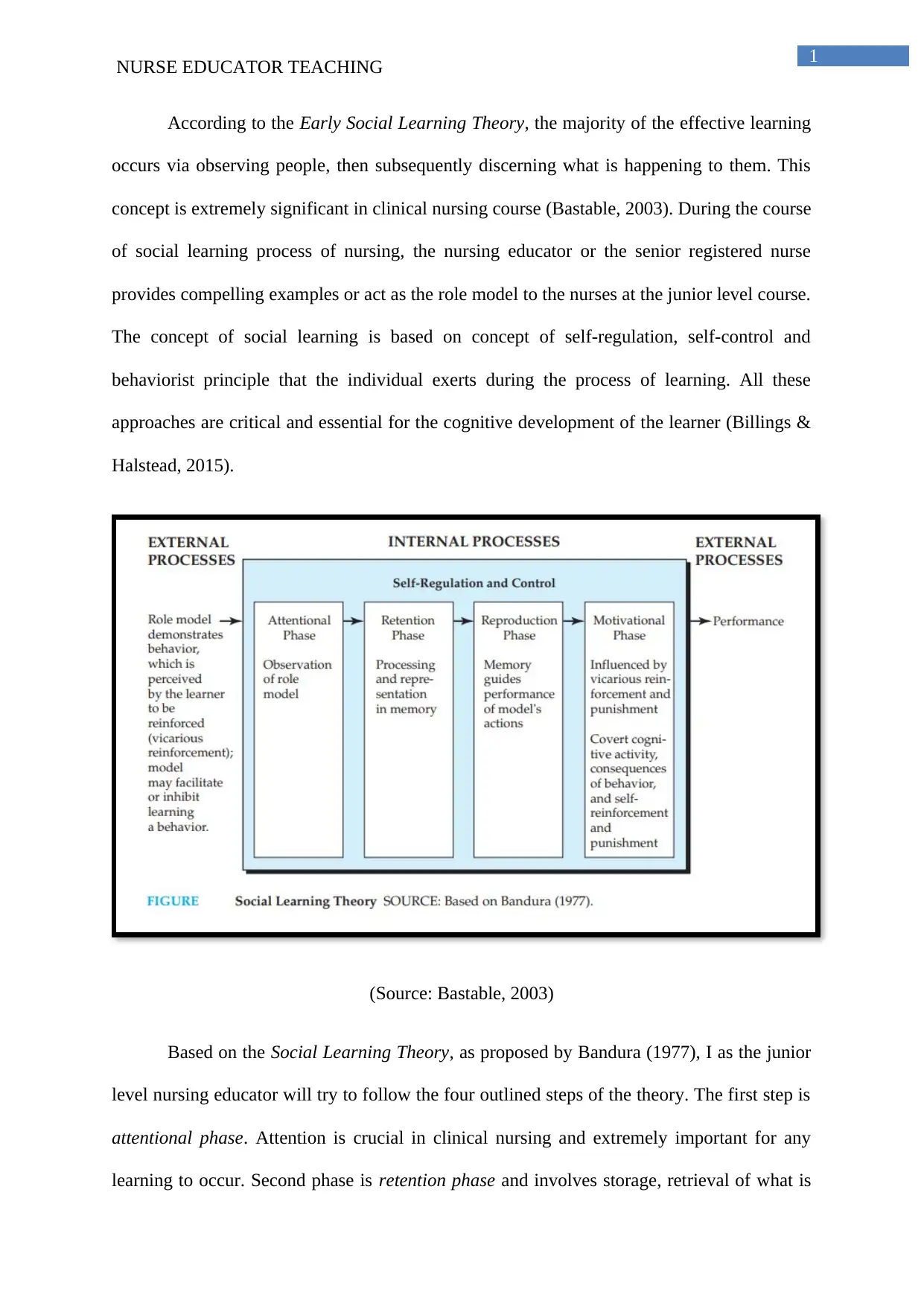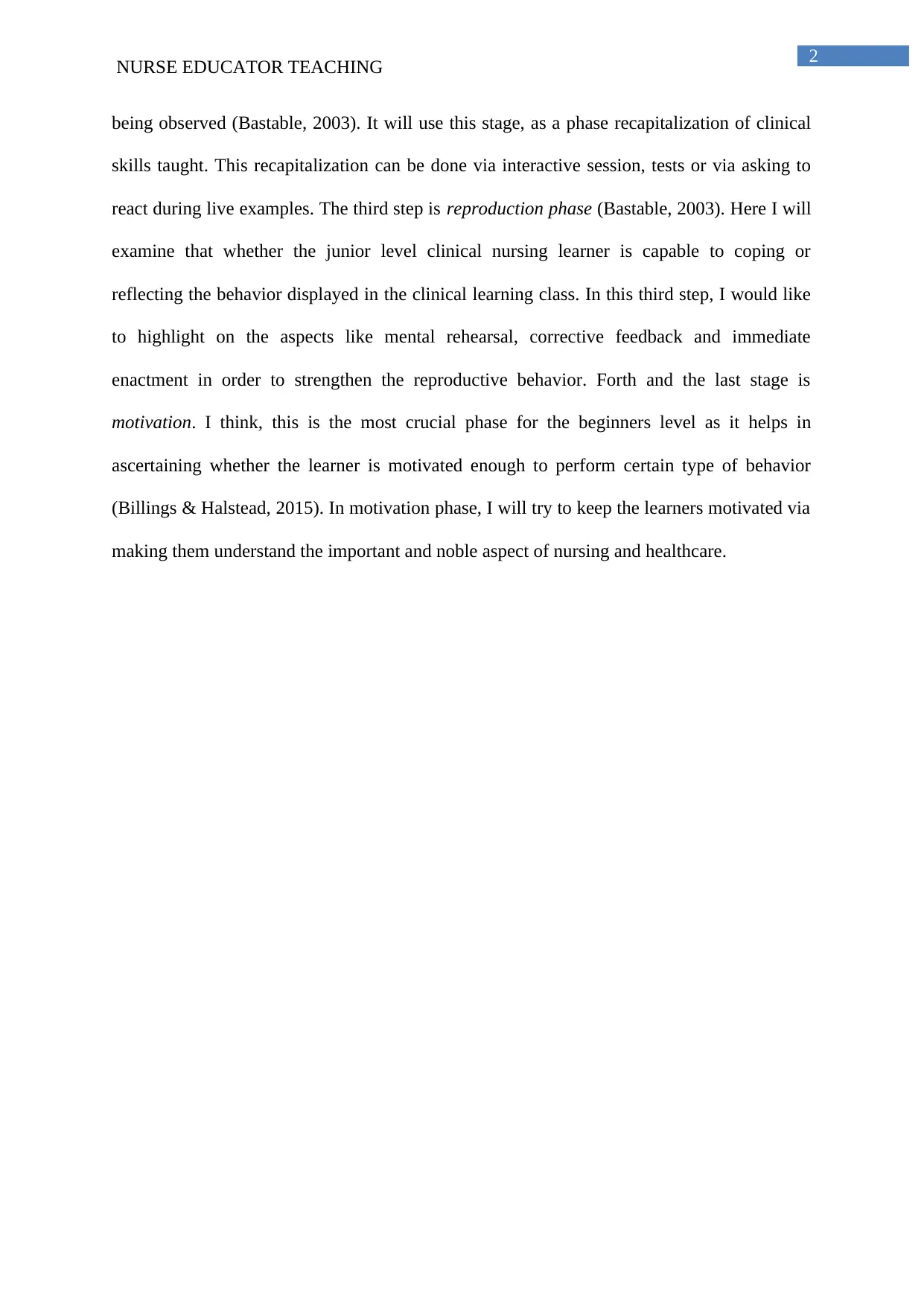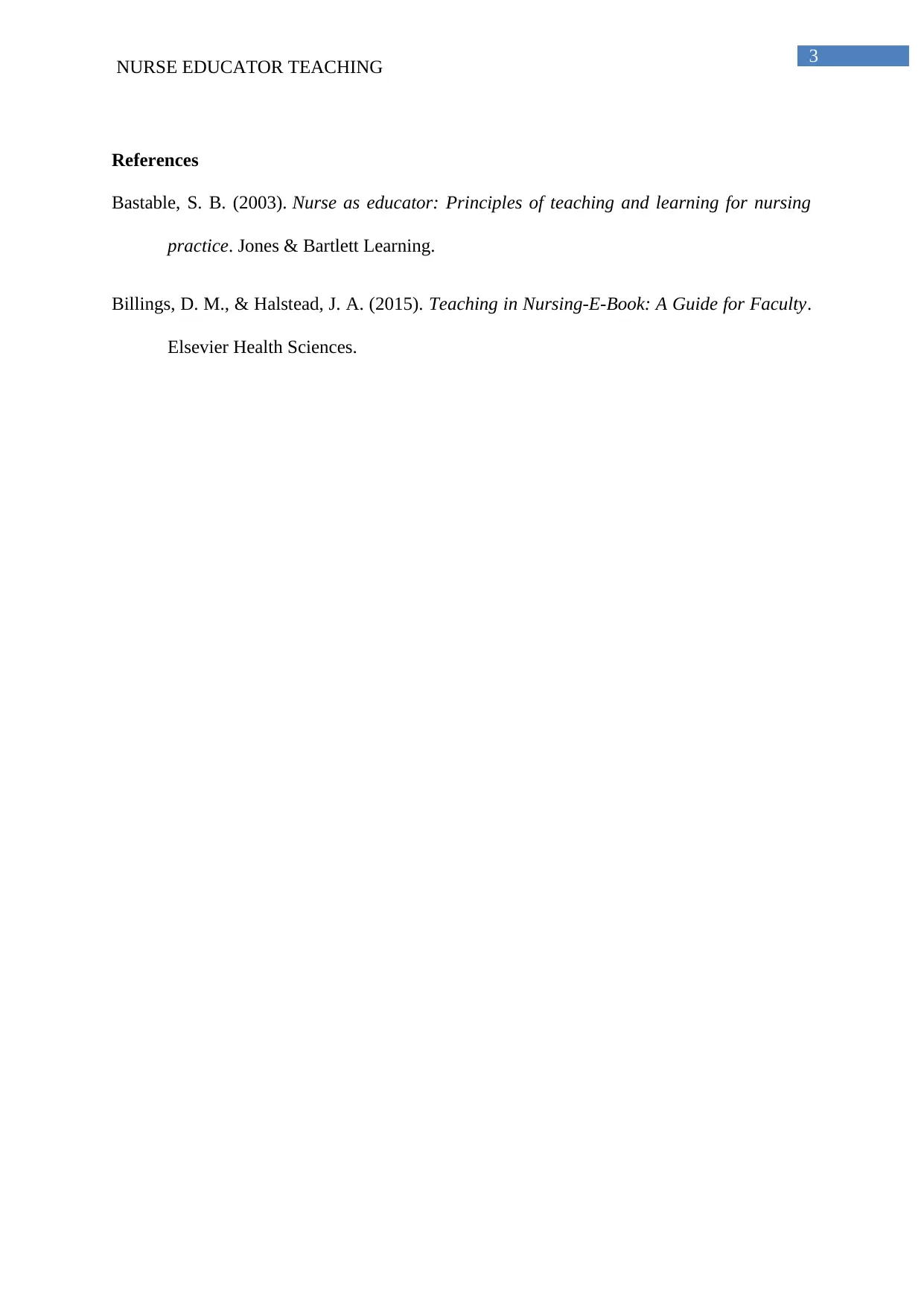Implementing Social Learning Theory in Nurse Educator Teaching
VerifiedAdded on 2020/05/16
|4
|466
|158
Homework Assignment
AI Summary
This homework assignment explores the application of Social Learning Theory in nursing education, emphasizing its significance as proposed by Bandura (1977). The paper discusses how junior level nurse educators can employ four key phases—attentional, retention, reproduction, and motivation—to effectively guide learners. It highlights how attention is critical to learning in clinical settings, while retention involves storing observed skills for recapitalization through interactive sessions or tests. Reproduction requires the assessment of a learner’s ability to mimic behaviors demonstrated during instruction, supported by mental rehearsal and corrective feedback. Finally, motivation ensures that learners are driven to adopt desired behaviors, with educators emphasizing nursing's noble aspects. The assignment underscores the importance of self-regulation and role modeling in cognitive development within clinical nursing education.
1 out of 4










![[object Object]](/_next/static/media/star-bottom.7253800d.svg)